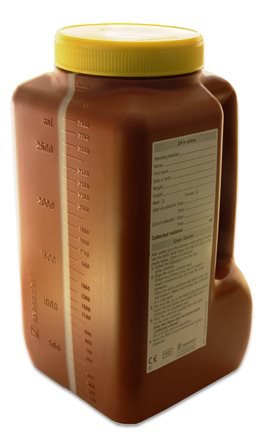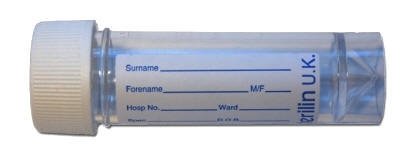Oxalate (Urine)
Chemical Pathology
Notes
Oxalate is measured as part of the investigation of the underlying cause of renal stone disease, either primary (endogenous oxalate overproduction due to an inherited enzyme deficiency), or secondary (e.g. due to excessive intake of oxalate or its precursors, or due to gastrointestinal disease associated with fat malabsorption).
Sample requirements
Preferred sample is a complete 24 hour urine collection taken into a 3L brown bottle:-

For very young children, a random urine sample taken into a 30mL Universal can be assayed for urine oxalate:creatinine ratio.

Storage/transport
Random urine samples should be sent promptly to the laboratory at ambient temperature.
Timed urine collections should be transported to the laboratory as soon after the urine collection is completed and preferably within 24 hours of completion.
Urine samples are acidified on receipt in the laboratory.
Required information
Relevant clinical details, including reason for the request. Please ensure start date and time and finish date and time of 24 hour urine collections is indicated on the urine bottle. This information is essential for samples to be analysed and results correctly interpreted.
Turnaround times
Samples are sent to a referral laboratory for analysis, with results expected back within 2 weeks.
Reference ranges
- 24 hour urine oxalate in adults:- ≤460 µmol/24 hrs (correct to 1.73m² in children)
Age appropriate urine oxalate:creatinine ratio reference ranges are published on reports issued.
The assay of primary hyperoxaluria (PH) metabolites may be indicated in cases of unexplained hyperoxaluria to help in identification of those in whom genetic testing is indicated. PH metabolite analysis replaces glycolate assay and includes additional analytes glycerate, 4-hydroxy-2-oxoglutarate and dihydroxyglutarate.
These tests are not available in the presence of normal oxalate excretion. Please contact the duty biochemist for further details.
Further information
To learn more visit Lab Tests Online
or access the Oxalate monograph of the Association for Clinical Biochemistry and Laboratory Medicine
Page last updated: 07/02/2019